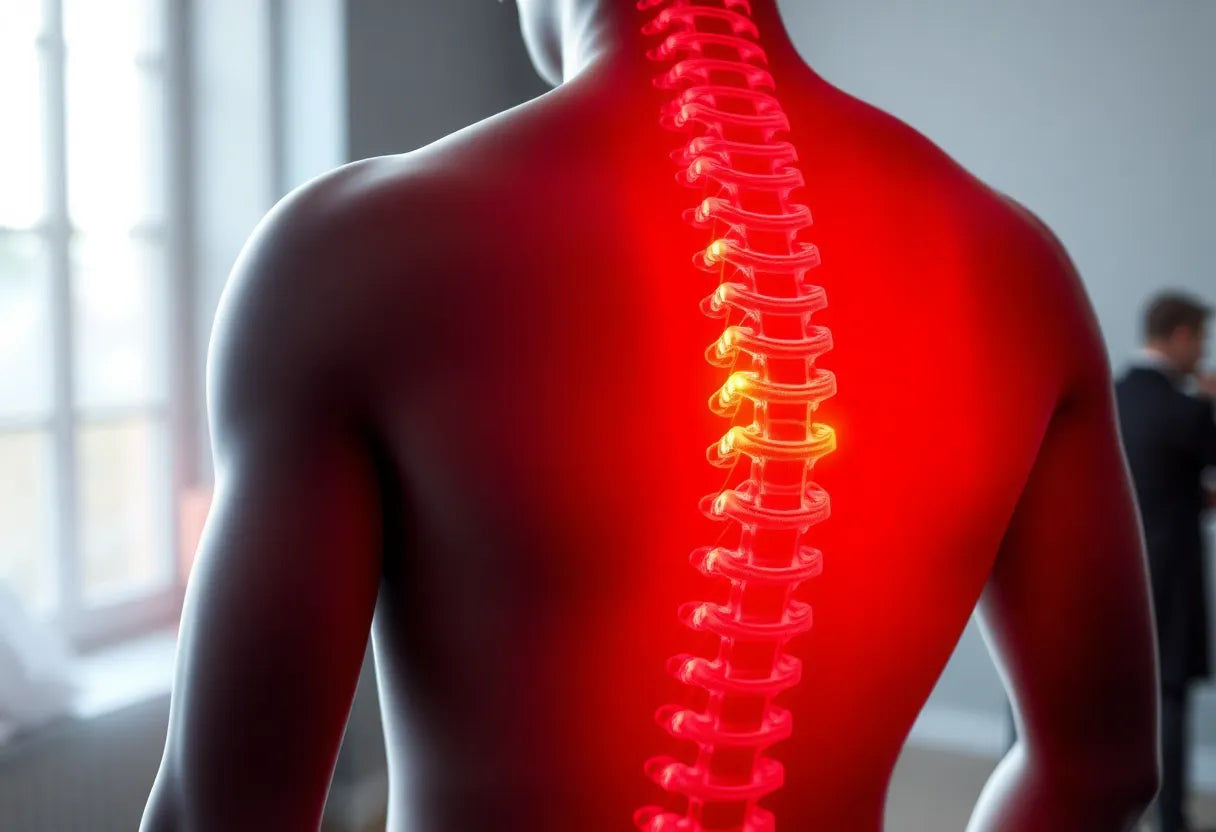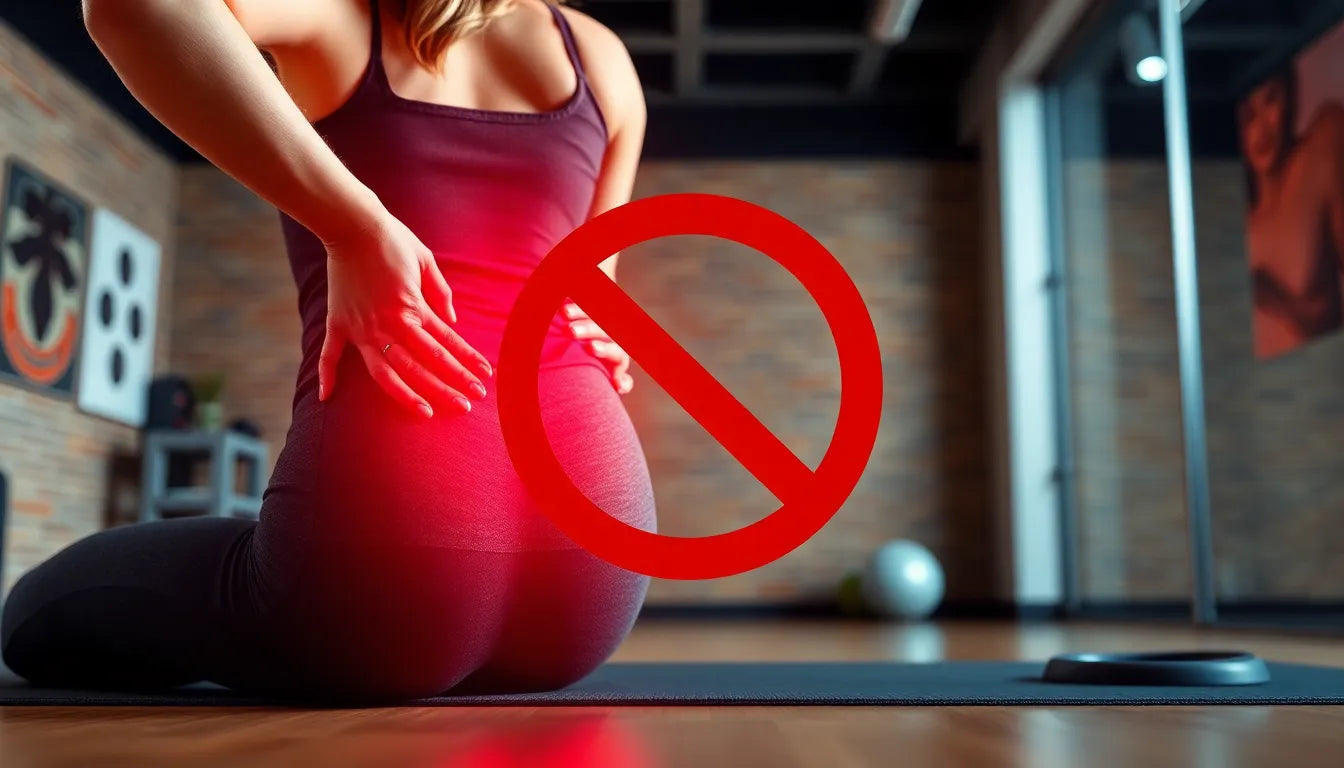Pain between the shoulder blades is a common complaint that many individuals experience at some point in their lives. This discomfort can stem from a variety of causes, and while a herniated disc is often suspected, it is not always the direct culprit. Understanding the underlying cause of this pain is crucial, as it guides the appropriate treatment approach and can significantly impact one's quality of life.
Understanding the pain
The sensation of pain between the shoulder blades can be perplexing, given its potential range of origins. Many people might jump to the conclusion that a herniated disc is responsible, particularly when the pain is intense or persistent. However, it's important to note that a herniated disc, especially in the thoracic region, is a less common cause of such discomfort compared to other conditions. Accurate diagnosis is essential to determine the true source of pain and to ensure that the treatment plan is both effective and appropriate.
Setting the scene
To better understand the potential causes of pain between the shoulder blades, it's helpful to have a basic grasp of the anatomy of the spine, particularly the thoracic and cervical regions. The thoracic spine, located in the mid-back, consists of 12 vertebrae that connect to the ribs and help protect vital organs. The cervical spine, found in the neck, comprises seven vertebrae and is more mobile, supporting the head's weight and allowing for a wide range of motion.
Referred pain is another important concept when discussing pain in the shoulder blade area. This phenomenon occurs when discomfort originates in one part of the body but is felt in another. For instance, issues in the cervical spine, such as a herniated disc, can lead to pain that radiates down to the shoulder blades, even if the source of the problem is located higher up in the neck.
In summary, while pain between the shoulder blades can often be attributed to a variety of causes, including muscle strains and spinal conditions, a herniated disc is not always the primary suspect. Understanding the intricate anatomy of the spine and the concept of referred pain is essential for accurately diagnosing and addressing the true cause of discomfort in this region. As we delve deeper into the causes, symptoms, and treatments in the following sections, having this foundational knowledge will be invaluable for anyone experiencing or seeking to understand this type of pain.
Identifying the root cause of shoulder blade pain
When experiencing pain between the shoulder blades, it's essential to differentiate between the potential causes to ensure effective treatment. Often, muscle strains are a common culprit, particularly involving the rhomboid and trapezius muscles. These strains can result from poor posture, overuse, or sudden movements, leading to sharp or aching pain that may worsen with specific activities or pressure.
In contrast, pain due to a herniated disc, particularly in the cervical or thoracic spine, presents differently. A herniated disc occurs when the soft inner gel of a spinal disc protrudes through its tougher outer layer, potentially compressing nearby nerves. This compression can cause radiating pain, numbness, or tingling sensations, which are more indicative of nerve involvement rather than muscular issues.
Thoracic vs. cervical disc herniation: key differences
Understanding the differences between thoracic and cervical disc herniations is crucial for accurate diagnosis and treatment. Thoracic disc herniation, while less common, can cause pain that radiates along the chest wall or between the shoulder blades. This type of herniation can also lead to stiffness and limited mobility in the mid-back region.
Conversely, cervical disc herniation is more prevalent and often involves symptoms that extend beyond the shoulder blades. These symptoms can include pain radiating to the neck, shoulders, arms, and even hands, often accompanied by numbness or tingling. The involvement of cervical nerve roots can lead to more extensive discomfort, affecting a broader range of motion and function.
Diagnostic tools and procedures
Accurate diagnosis of the cause of shoulder blade pain is essential for effective treatment. The diagnostic process typically involves a thorough medical history and physical examination to identify the nature and extent of the pain. Imaging techniques such as X-rays, CT scans, and MRIs are invaluable in confirming the presence of a herniated disc and ruling out other potential causes.
These imaging tools help visualize the spine's structure, allowing healthcare providers to identify any disc abnormalities or nerve compression. This detailed assessment is critical in distinguishing between muscular and disc-related pain, guiding the appropriate treatment approach.
Conservative management and treatment options
For many individuals, conservative management is the first line of treatment for herniated disc pain between the shoulder blades. This approach often includes medication to manage pain and inflammation, such as nonsteroidal anti-inflammatory drugs (NSAIDs), steroids, or nerve pain medications like Gabapentin. Physical therapy plays a significant role in treatment, focusing on exercises that strengthen and stabilize the spine, improve flexibility, and promote movement.

Women's Posture Shirt™ - Black
Improves posture, can relieve pain and tensions, and increases postural awareness for women.

Men's Posture Shirt™ - Black
Patented NeuroBand™ technology activates muscles, relieves back and shoulder pain in men.
Spinal injections, such as epidural steroid injections, may also be used to reduce inflammation and alleviate pain, providing relief that allows for more effective participation in physical therapy. Emphasizing movement over rest is crucial, as prolonged inactivity can lead to muscle weakening and stiffness, exacerbating symptoms.
When is surgery necessary?
While most cases of herniated disc pain can be managed conservatively, surgery may be necessary for severe or persistent cases. Surgical intervention is typically considered when conservative treatments fail to provide relief, or when there is significant nerve compression causing weakness or loss of function. Minimally invasive surgical options, such as microdiscectomy or endoscopic procedures, offer benefits like reduced recovery time and less postoperative pain.
Ultimately, the decision to pursue surgery should be made in consultation with a healthcare provider, considering the severity of symptoms, overall health, and the potential benefits and risks of the procedure.
Recovery and prognosis for herniated disc pain
The journey to recovery from a herniated disc, particularly one affecting the shoulder blade area, often requires patience and adherence to a well-structured treatment plan. Most individuals experience significant improvement within 6-8 weeks when following conservative management strategies. This period allows the body to heal naturally, reducing inflammation and alleviating nerve compression symptoms.
For those requiring surgical intervention, the prognosis remains positive, with many patients experiencing substantial relief from symptoms post-surgery. Minimally invasive techniques have improved outcomes, reducing recovery time and minimizing complications. Surgery is particularly effective in cases where nerve recovery is necessary, or when pain persists despite conservative measures.
Preventive measures and ergonomic solutions
Prevention plays a crucial role in managing and reducing the risk of herniated disc pain between the shoulder blades. Implementing lifestyle changes and ergonomic solutions can significantly impact spinal health. Maintaining proper posture, especially during prolonged sitting or standing, is essential. Ergonomic office setups, including adjustable chairs and desks, can alleviate undue stress on the spine.
Supportive devices, such as lumbar cushions or posture-correcting braces, can also aid in maintaining spinal alignment. Regular exercise, focusing on core strengthening and flexibility, helps support spinal structures and prevent future injuries. Additionally, being mindful of lifting techniques and avoiding sudden, jerky movements can further protect the spine from herniation.
Conclusion
Understanding the true cause of pain between the shoulder blades is paramount for effective treatment and long-term relief. Whether the pain stems from a herniated disc or other musculoskeletal issues, accurate diagnosis and a tailored treatment plan are essential. By being proactive in managing health, individuals can significantly improve their quality of life and reduce the risk of future complications.
Seeking specialist care when necessary and incorporating ergonomic solutions into daily life are vital steps in managing and preventing herniated disc pain. With a comprehensive approach, individuals can find relief and regain their comfort and mobility.
Frequently Asked Questions
What are the common symptoms of a herniated disc between the shoulder blades?
Symptoms may include radiating pain, numbness, tingling, or weakness in the neck, shoulder blades, and arms, particularly if a cervical disc is involved.
How is a herniated disc diagnosed?
Diagnosis typically involves a combination of medical history, physical examination, and imaging tests like X-rays, CT scans, or MRIs.
Can a herniated disc heal on its own?
Many herniated discs improve with conservative treatment over 6-8 weeks, though some may require surgical intervention if symptoms persist.
What are the best exercises for managing herniated disc pain?
Physical therapy exercises focused on strengthening and stabilizing the spine, improving flexibility, and maintaining movement are often recommended.
When should I see a doctor for shoulder blade pain?
It's advisable to seek medical attention if pain is severe, persistent, or accompanied by symptoms like numbness, tingling, or weakness.
Kilder
- OrthoNebraska. "Back Pain Between the Shoulder Blades."
- UVA Health. "Cervical Disc Herniation."
- OrthoIndy. "Herniated Disc Symptoms."
- Spine Endoscopy. "Cervical Discus Herniation."
- Revival Physical Therapy. "Upper Back Herniated Disc."
- Cleveland Clinic. "Herniated Disk."
- Penn Medicine. "Herniated Disc Disorders."
- Ark Surgical Hospital. "Herniated Discs."
- Mayfield Clinic. "Herniated Cervical Disc."


















